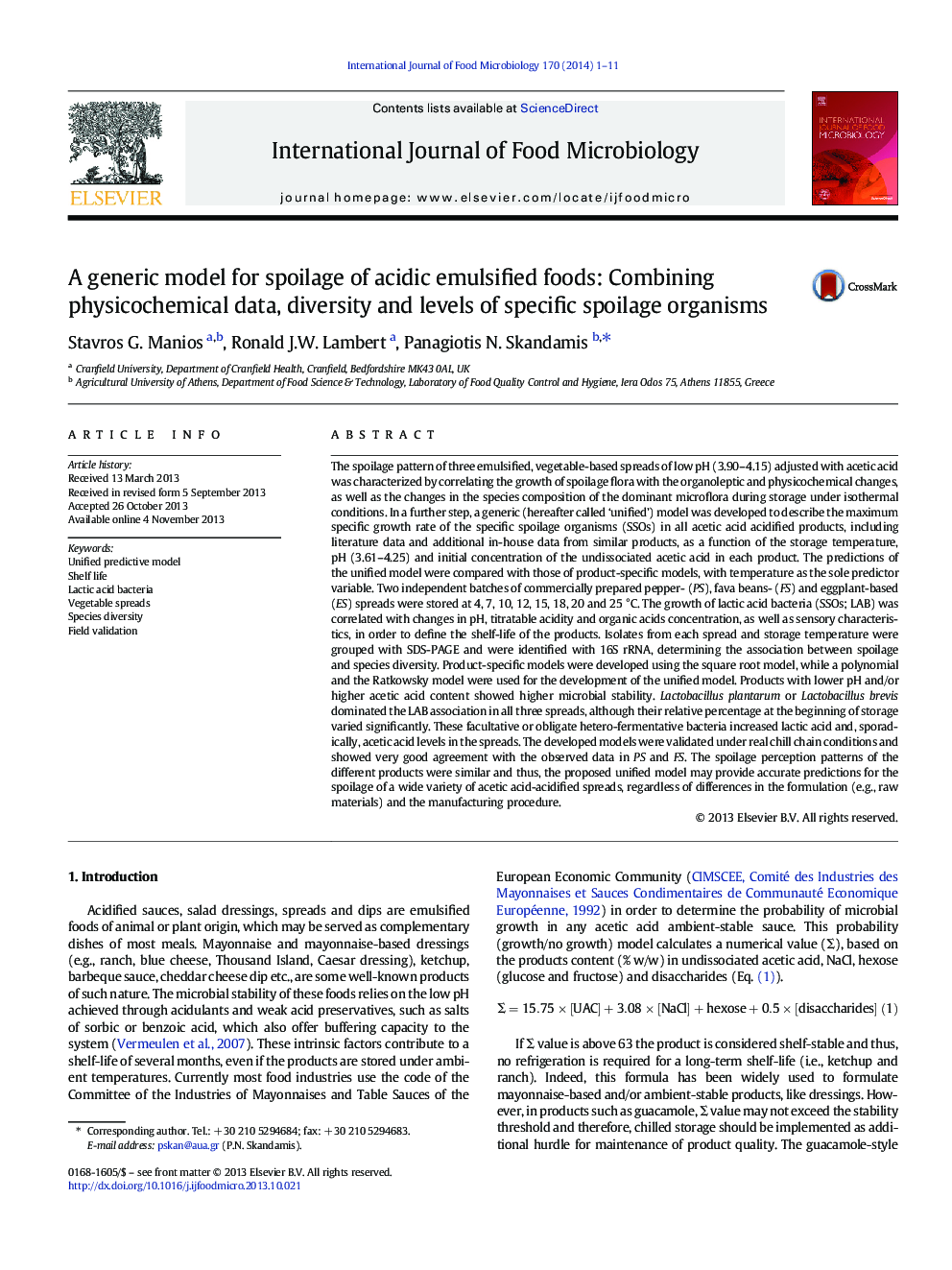| کد مقاله | کد نشریه | سال انتشار | مقاله انگلیسی | نسخه تمام متن |
|---|---|---|---|---|
| 4367031 | 1616612 | 2014 | 11 صفحه PDF | دانلود رایگان |
• Mapping the spoilage pattern of acetic acid-based spreads that require refrigeration.
• Delivery of product-specific and generic models accounted for a broad food category.
• Validated model under dynamic chill chain conditions.
• Selection between polynomial and Ratkowsky-type models.
The spoilage pattern of three emulsified, vegetable-based spreads of low pH (3.90–4.15) adjusted with acetic acid was characterized by correlating the growth of spoilage flora with the organoleptic and physicochemical changes, as well as the changes in the species composition of the dominant microflora during storage under isothermal conditions. In a further step, a generic (hereafter called ‘unified’) model was developed to describe the maximum specific growth rate of the specific spoilage organisms (SSOs) in all acetic acid acidified products, including literature data and additional in-house data from similar products, as a function of the storage temperature, pH (3.61–4.25) and initial concentration of the undissociated acetic acid in each product. The predictions of the unified model were compared with those of product-specific models, with temperature as the sole predictor variable. Two independent batches of commercially prepared pepper- (PS), fava beans- (FS) and eggplant-based (ES) spreads were stored at 4, 7, 10, 12, 15, 18, 20 and 25 °C. The growth of lactic acid bacteria (SSOs; LAB) was correlated with changes in pH, titratable acidity and organic acids concentration, as well as sensory characteristics, in order to define the shelf-life of the products. Isolates from each spread and storage temperature were grouped with SDS-PAGE and were identified with 16S rRNA, determining the association between spoilage and species diversity. Product-specific models were developed using the square root model, while a polynomial and the Ratkowsky model were used for the development of the unified model. Products with lower pH and/or higher acetic acid content showed higher microbial stability. Lactobacillus plantarum or Lactobacillus brevis dominated the LAB association in all three spreads, although their relative percentage at the beginning of storage varied significantly. These facultative or obligate hetero-fermentative bacteria increased lactic acid and, sporadically, acetic acid levels in the spreads. The developed models were validated under real chill chain conditions and showed very good agreement with the observed data in PS and FS. The spoilage perception patterns of the different products were similar and thus, the proposed unified model may provide accurate predictions for the spoilage of a wide variety of acetic acid-acidified spreads, regardless of differences in the formulation (e.g., raw materials) and the manufacturing procedure.
Journal: International Journal of Food Microbiology - Volume 170, 17 January 2014, Pages 1–11
